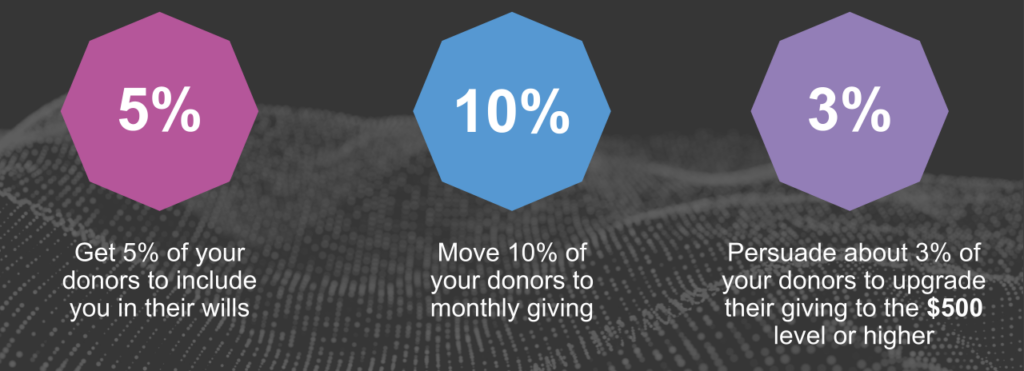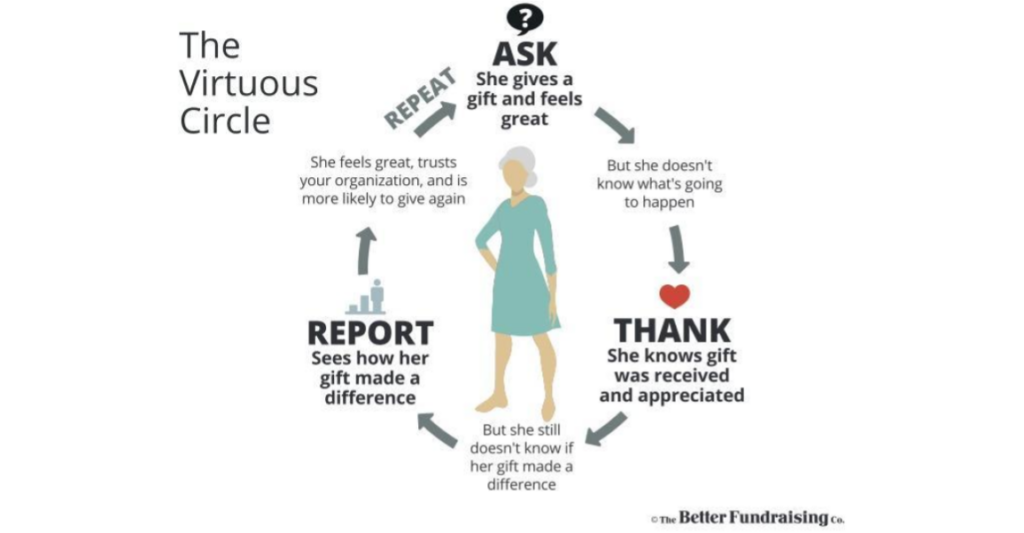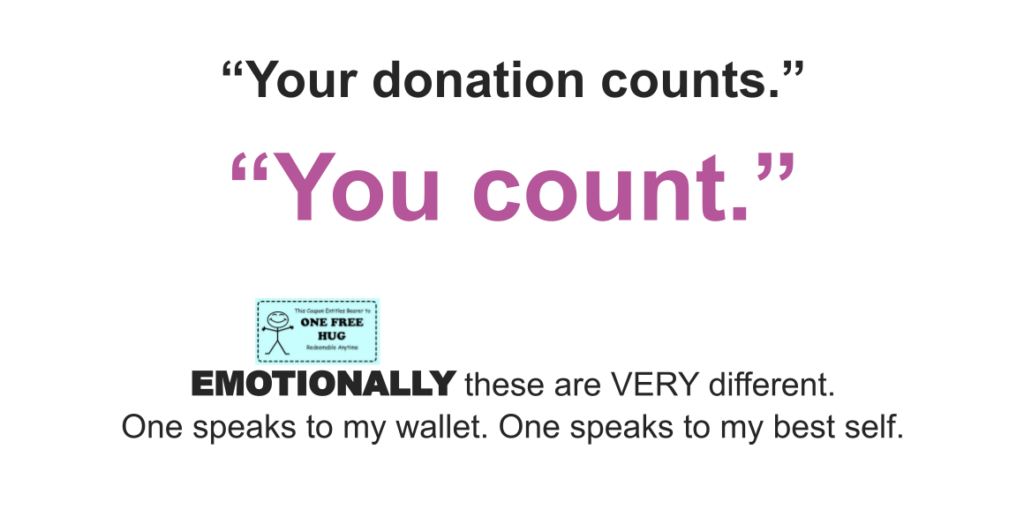Donor Communications and Return on Investment

What if you could double the ROI of your communication strategy? Fundraising copywriting expert Tom Ahern knows it’s possible, and he recently shared some insight into how to do it.
The First Step: Identify Your Target Audience
Identifying your donor audience is vital. Once you do so, your organization will be able to save time and resources, improve your donor retention, increase gift amounts from existing donors, find new donors, and optimize your direct mail spending. Unfortunately, there is no one-size-fits-all approach to targeting your audience. Software such as GivingDNA allows you to know your target audience by helping you gain insights and really understand what appeals to your donors so you can personalize your communication and get better results.
How to Double Your Fundraising Revenue: Direct Mail Appeal
Now that you have a better understanding of who your target audience is let’s look at ways to double your fundraising revenue. Here are three tangible goals that will put you on your way to meeting your goal:

You may be thinking to yourself, This sounds great, but how do I get my donors to do this? One reliable strategy is to analyze your data based on donor demographics and channel preferences to identify those donors who prefer direct mail. Many organizations have found that a majority of their major donors have come as a result of a direct mail appeal.
Using The Virtuous Circle in a Direct Mail Appeal

The three main components of a direct mail appeal are Ask, Thank, and Report. While your ask may seem like the key piece in your fundraising strategy, it is part of a larger fundraising ecosystem.
ASK: Tips for direct response appeal design and writing
- Start the story on the envelope. For example, place an appeal statement on the front or back of the carrier: “She needs your help!”
- Give your donor a problem to solve.
- Include an affirmation statement in the reply: Yes! I would love to help!
- Make your cause a local one. “LOCAL” also means “close to my heart.” Nothing is more “local” than a person’s IDENTITY.
Starting the story immediately on the envelope, sharing the problem to be solved, and making the donor feel excited to be part of the solution, especially one that’s close to their heart, are excellent elements of a good ask letter. However, according to Tom, “The real financial treasure hides inside your thanks and reporting (i.e., newsletters and social posts).”
THANK: The power of a thank you note
A well-crafted thank you note not only maintains a good relationship with donors but can also result in a hefty donation. A CEO received the following reply to a thank you from a donor:
You write the BEST thank you notes for just about any charitable organization I’ve been involved with. This is wonderful stuff!
The reply included a $100,000 gift. This is not uncommon: many organizations have reported receiving gifts after sending thank-you notes. The right kind of thank you is just as important as your initial ask.
According to Tom, a rule of thumb when writing a thank you note is to “thank the donor for who they are and not for their gift.”
Tom reminds us that giving is intimate. When formulating language for your thank you note, use language that will appeal to your donor’s emotions. Donors should feel seen for who they are, not what they give.

Researchers Dr. Adrian Sargeant and Dr. Jen Shang have confirmed, “When you like your donors, they’ll like you back. And they’ll express their fondness for you through increased giving. Doubling donations is common in tests.”
REPORT: Newsletters
Reporting allows donors to see the impact of their gift and reassures them that their donations are being used to solve pressing issues. Providing donors with reports also allows them to track your organization’s progress, showing when their help will be needed again in the future.
Headlines Matter
Headlines matter a lot in newsletters. Tom explains the importance of using donor-focused headlines: “Headlines should highlight how great the donor is, not how great the organization is.” Organizations that write headlines focused on the donor have seen up to a 1000% increase in gifts and donations.”
Appeal to Emotions
Tom recalls a line he read in a blog post written by marketing guru Seth Godin: “Our target markets are often ‘lazy people in a hurry.’” Keep in mind that your audience has little time to spend reading your newsletter, so you must grab their attention while appealing to their emotions in just seconds. “Donor communications are supposed to make you feel something,” explains Dr. Adrian Sargeant.
Here are some feelings to convey when communicating with donors:
- Deeply appreciated
- Wanted
- Special
- Thanked beyond expectations
- On a journey
- Pleased
- Connected
- “Proud of what I did”
- Happier
- Entertained
- Discovering
- Needed
- Surprised
- Informed
Neurologist and author Donald B. Calne says, “The essential difference between emotion and reason is that emotion leads to action, while reason leads to conclusions.” Action is what happens when your donors send a gift.
While positive emotions generate the desired action, research from NYU neuroscientist Joseph LeDoux in Emotionomics has found that negative emotions can generate even more action. “Negative emotions are linked to survival—and are much stronger.”
Using language that evokes sadness and anger pertaining to your organization’s cause stirs a sense of urgency in your donor to take immediate action to rectify the problem.
The bottom line is that negative emotion in the letter can create urgency and lead to giving. Positive emotion in a thank you note, newsletter, or report makes the donor feel good about their part in rectifying the problem.